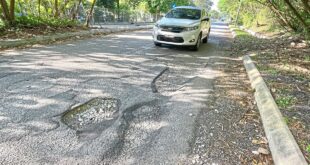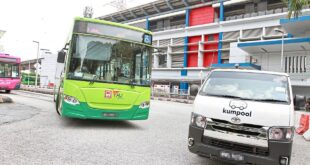WE win some, we lose some. So goes the age-old adage.
Lately, I have been contemplating the weight of these words.
Barely six months after the Federal Court reaffirmed a Court of Appeal decision to quash the development order (DO) for a high-rise project in one of Kuala Lumpur’s beloved parks in Taman Tun Dr Ismail (TTDI), we find ourselves mourning the loss of another popular green space.
Unlike Taman Rimba Kiara, where TTDI residents fought valiantly to win back their park, the one over in Setapak quietly slipped through the cracks with few aware of the sale of the land.
I’m referring to a huge chunk of Taman Rekreasi Ayer Panas which was sold to a third party for a mixed development project.
To put things into perspective, the size of the Setapak park land nearly matches that of Taman Rimba Kiara, spanning approximately 10.1ha – equivalent to 17 football fields.
The apex court’s decision on Taman Rimba Kiara marked the end of a protracted dispute between TTDI Residents’ Association and Kuala Lumpur City Hall (DBKL).
In the case of Taman Rekreasi Ayer Panas, following a change in government in 2018, efforts were made to cancel the land transaction.
The company sued for breach of contract and won at both the High Court and Court of Appeal.
Despite the government’s execution of all necessary steps to nullify the deal, including refunding the premium, one cannot help but ponder whether this entire ordeal could have been averted if our local council and state agencies carried out due diligence by disclosing the land deal to the public in the first place.
Had they done so, this could have prevented the city from losing a huge chunk of its park land.
An aerial view of Taman Rekreasi Ayer Panas in Setapak where a sizeable portion of the park was sold to a developer. — Filepic
In the case of Taman Rekreasi Ayer Panas, I was told by a Federal Territory Land and Mines Office (PTGWP) officer that even though it was government-owned land, it was not gazetted.
According to the National Land Code, non-gazetted land does not require a public announcement of its sale nor an objection hearing.
I find this disturbing. Our local governments play an important part in shaping communities and making decisions that directly affect our lives.
The sale of a beloved community park definitely impacts us.
DBKL and relevant government agencies are accountable to ratepayers, not politicians or developers.
After all, isn’t it a fundamental principle that taxation should come with representation?
Had DBKL and agencies made an effort to disclose this land transaction, they would undoubtedly have been inundated with inquiries from city folk and Kuala Lumpur MPs, all of whom were also kept in the dark.
The people deserve to be informed when their precious parks are on the verge of being sold.
Ultimately, the most effective form of accountability for any local government is when participation of its citizens in decision making is encouraged and welcomed.
This is especially so given that these land sales are contradictory to Kuala Lumpur Structure Plan 2020 (KLSP2020), which is currently in force.
This point was aptly put by KLRA+, a coalition of residential associations, who highlighted the fact that policy No 113 CF3 states: “City Hall of Kuala Lumpur shall ensure that all government land is used for government or public facility purposes.”
As such, DBKL and PTGWP are obligated to strictly adhere to the city plan.
Unfortunately, both agencies have failed on this score.
Moving forward, the Kuala Lumpur mayor bears the responsibility of ensuring complete transparency regarding current and future land transactions involving public land and assets up for lease or sale.
Even if the land is not owned by DBKL but by another agency, the mayor, who approves development orders, owes ratepayers an explanation.
Past Kuala Lumpur mayors had been advocating for more green spaces to be protected; hence if there is a reversal of the city’s environmental policies, the mayor should inform ratepayers about it.
At least we can take comfort knowing that Prime Minister Datuk Seri Anwar Ibrahim, who chaired a meeting with DBKL and Federal Territories Department (JWP) on July 17 to discuss the draft KLSP2040 before its gazettement, had directed DBKL to prioritise the preservation of its remaining green lungs and open spaces to achieve the goal of a green city.
The prime minister’s decision to delay the gazettement of the draft plan to allow stakeholder feedback reflects the consensus that Kuala Lumpur residents are advocating for the preservation of more green areas.
Looking ahead, it is my hope for the Kuala Lumpur mayor to do his part in ensuring transparency in plans for recreational areas earmarked for development, such as Taman Rimba Kiara and Taman Rekreasi Ayer Panas, because city denizens are no longer willing to keep silent when it comes to their parks.
 BeritaKini.biz Berita Viral Terkini di Malaysia
BeritaKini.biz Berita Viral Terkini di Malaysia





